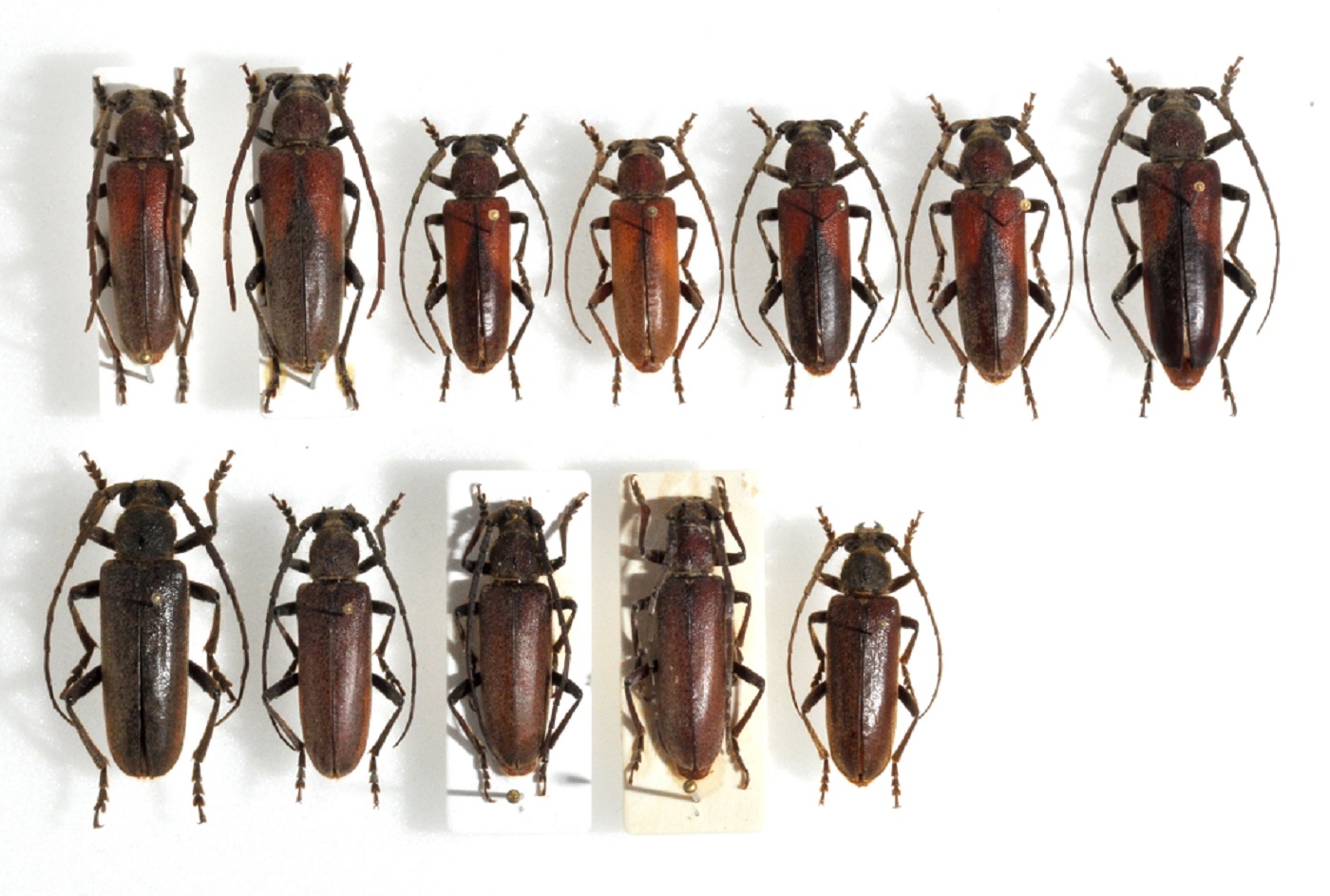| T O P I C R E V I E W |
| Pierre |
Posted - 28/05/2017 : 21:02:34

164.22 KB
I received this photo from a friend who has 5 identical specimens in hand. From Zambia. About 30mm.
Makes me think of a post from Carlo, showing a similar item. Being discussed as an eventually Africophanes amicus. But honestly I have some doubts.
http://www.cerambycoidea.com/forum/topic.asp?TOPIC_ID=952 |
| 4 L A T E S T R E P L I E S (Newest First) |
| Pierre |
Posted - 02/07/2017 : 16:44:50

180.97 KB
J'ai maintenant devant moi cette série de spécimens, y compris les 2 de la photo qui a ouvert ce post. Zambie, Chibunga (NW Zambie). A gauche les deux exemplaires de la collection de Carlo (ouest de Zambie, non loin de la frontière avec le Malawi). Les tailles vont de 25 à 32mm. Pierre-Olivier m'a communiqué des photos de spécimens Sud-Africains.
Une comparaison minutieuse avec des spécimens noirs n'a pas mis en évidence de différences notables. Ponctuation, pilosité y compris ventrale, dimensions des yeux, configuration du mentum, etc. sont strictement identiques avec une variation intraspécifique minime.
Ce qui frappe en revanche est la remarquable stabilité de la coloration. L'envahissement de la couleur rouge par la partie noire sur les élytres est toujours la même: remontant depuis l'apex jusqu'au milieu environ puis formant l'étirement triangulaire vers la suture avec, pour tous les spécimens, un décrochement latéral supplémentaire à mi-parcours de la diagonale. Autre critère très stable est la forme parallèle allongée du corps.

304.33 KB
Les mêmes, accompagnés de quelques amicus noirs. De gauche à droite: 1X Zambie, Palabana hills, S Zambia, 32mm. 3X Zimbabwe, Gweru, Natalale, 30mm. 1X Tanzania, Mufindi, Mafinga. 28mm. |
| Norbert |
Posted - 30/05/2017 : 08:56:47
Hello.
In fact, I have also collected these spécimens but also the true Africophanes amicus which is totally black and less thin, both in Zambia.
I have submitted them to karl Adlbauer and his conclusions were they are same species. Not so agree with him but he's my mentor regarding african Cerambycinae.
I am not sure but I think I have some in stock...
At your disposal
Norbert
|
| Pierre |
Posted - 29/05/2017 : 20:55:19
I will receive these 5 specimen in a few days. And so will be able to study the question, as I have some Africophanes amicus of the classical-typical "brown look" in collection. |
| Pierre-Olivier Maquart |
Posted - 29/05/2017 : 19:40:34
They are indeed very bizarre.
I have seen some in South-Africa as well, but I never saw any transition form... Is there any slight morphological difference ? (even in size ?) |
|
|


